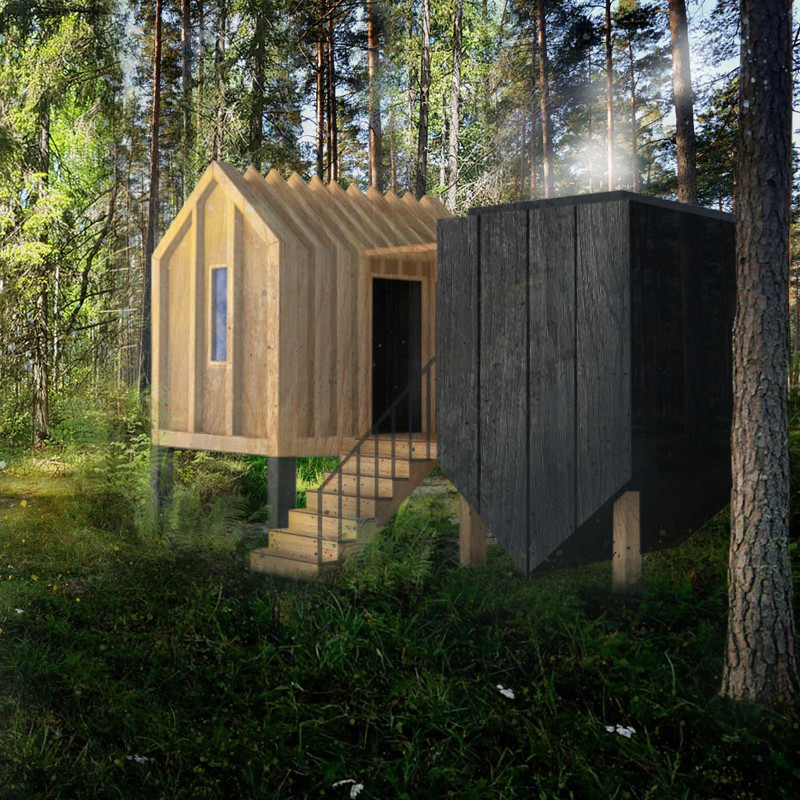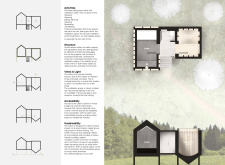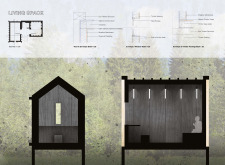5 key facts about this project
The Silent Meditation Forest Cabin is a carefully designed structure located in a tranquil forest environment. It aims to provide spaces for both meditation and daily living. The design concept revolves around creating two distinct forms, one dedicated to rest and the other to meditation. This thoughtful arrangement supports users' needs for privacy and interaction with nature.
Design Concept
Three main areas accommodate various activities such as sleeping, eating, working, meditating, and tea making. The clear separation between the living space and the meditation area emphasizes their different functions. An intermediate space connects these zones and houses necessary amenities, making the design practical while maintaining a strong aesthetic quality.
Spatial Organization
The cabin is elevated on timber footings, which helps reduce its impact on the environment by preserving ground vegetation. The structure's design language contrasts between the two main forms. The living area is open and welcoming, while the meditation space focuses inward, offering privacy for contemplation. This arrangement encourages users to engage with the natural surroundings in a direct and meaningful way.
Light and Views
Natural light is an essential element in the cabin's design. The living area features a vertical slot window that provides limited views of the forest, creating an enclosed feeling that still connects occupants to the outside. The meditation space, in contrast, uses a roof light to bring in plenty of natural light, fostering an atmosphere that promotes reflection and mindfulness.
Accessibility and Sustainability
Accessibility is considered throughout the design process. Options for ramps and timber steps ensure easy movement for all users. The materials chosen, including timber for the structural frame and sheep wool for insulation, highlight a dedication to sustainability. These materials provide good thermal performance while blending with the natural setting and supporting ecological principles.
The cabin uses light and views to connect inside spaces with the surrounding forest. Features like vertical slot windows and roof lights create a relationship between the interior and the tree canopy above, inviting nature into the daily experience of its occupants.






















































